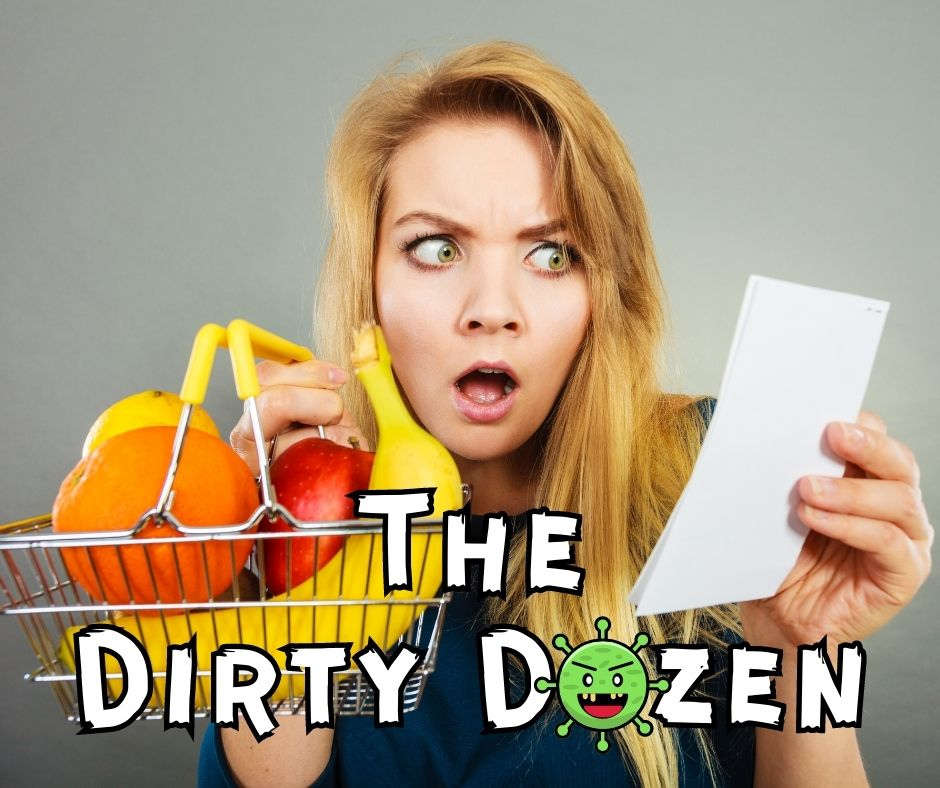😳 This superfood just made the 2024 “Dirty Dozen”
The illustrious blueberry has found itself with the no-so-savory distinction of making the annual “Dirty Dozen” list for the non-organically grown fruits and vegetables most contaminated by pesticides…joined this year by fellow first timer, the fiber-rich green bean. Save your gasps. These foods or any of the others on the list are not “bad,” they’re just treated that way…with lots and lots of chemicals.
What’s important here is that the head food curator in your home needs to know what fruits and veggies are on this list in order to wash and prepare them properly to avoid any long-term effects from the exposure to these pesticides.
Of course it’s easy to say “buy organic,” but at today’s already inflated food prices, regularly buying organic is simply not possible for most people. The real irony here is that eating fruits and veggies at the rate we are supposed to for optimal health exposes us consumers to the underlying risks of the toxins used in their production.
So what is one to do?
Well, since designing a healthy nutrition plan without these nutritional staples is a non-negotiable, it’s a super smart idea to know not only what foods routinely make up the “Dirty Dozen”, but also which ones made the “Clean 15.” You guessed it…the foods with the least amount of pesticides. Additionally, we must also learn the best practices for handling and cleaning our fruits and veggies.
First, here’s the 2024 “Dirty Dozen” (in no particular order)
✔️ Strawberries
✔️ Spinach
✔️ Kale/Collard Greens
✔️ Grapes
✔️ Peaches
✔️ Pears
✔️ Nectarines
✔️ Apples
✔️ Bell/Hot Peppers
✔️ Cherries
✔️ Blueberries
✔️ Green Beans
If you’re curious, bell peppers and kale/collard green topped the group with a stomach-turning 103 different pesticides total.
Cheer up though, there is some good news. Of the foods listed on the “Clean 15” below, nearly 65% had no detection of pesticides at all. So without any further ado, here’s the “Clean 15” (in no particular order)
✅ Avocados
✅ Sweet Corn
✅ Pineapple
✅ Onions
✅ Papayas
✅ Sweet Peas (frozen)
✅ Asparagus
✅ Honeydew Melon
✅ Kiwi
✅ Cabbage
✅ Mushrooms
✅ Mangoes
✅ Sweet Potatoes
✅ Watermelon
✅ Carrots
Of course, I’d recommend the cleaning of ALL fruits and vegetables before eating them, but those on the “Dirty Dozen” require some extra attention.
First of all, breathe easy…scientists remind us that the body has its own way of eliminating pesticides, so there should not be a fear associated with consuming fresh produce. Yet nevertheless, I think you’d agree there’s a certain “ick factor” to eating foods covered in toxic chemicals. Taking the extra steps to clean our fruits and vegetables properly helps immensely to reduce any potential risk factors, PLUS they’ll taste a whole lot better too.
Here’s how:
A quick rinse ‘n rub under the faucet doesn’t quite get the job done. It’s best to soak them in a large bowl of cold water along with 2-3 tablespoons of Baking Soda. Agitate the water then add your, say strawberries. Let them sit for 10 minutes or so to remove the gunk, then drain all that icky water, rinse them again thoroughly under cold water, drain, and store them in an airtight container … that’s it. You’re good to go.
Bottom line, the value of eating fresh fruits and vegetables far outweighs the potential hazards. In other words, conventional blueberries are better than no blueberries at all so eat them to your heart’s content … just give ‘em a good bath first.


0 responses to “#10 The Dirty Dozen”